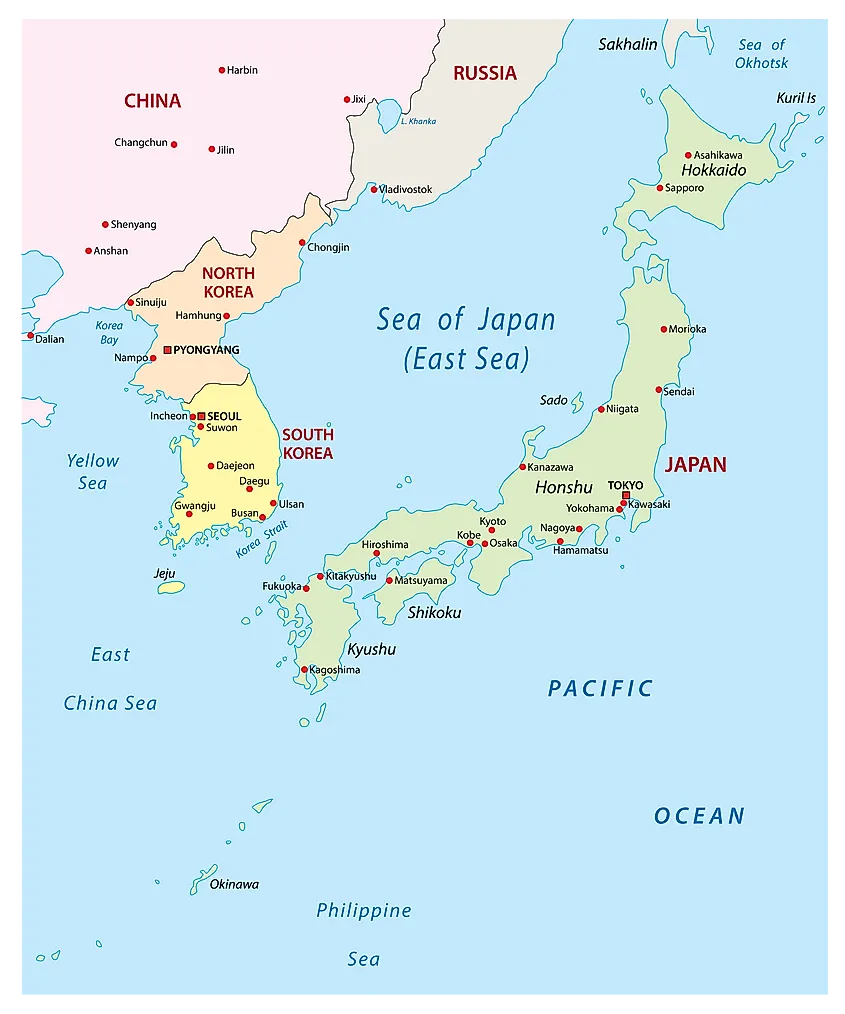Sea of Japan
The Japan Sea is a body of water located between Japan to the east and the Asian mainland to the west. It is also known as the Sea of Japan and is bordered by the Japanese islands of Hokkaido, Honshu, and Kyushu to the east, and by Russia, North Korea, and South Korea to the west.
The Japan Sea is approximately 978,000 square kilometers (378,000 square miles) in size, with an average depth of 1,752 meters (5,748 feet). The sea is characterized by its deep and narrow basins, which are separated by underwater ridges and plateaus. The deepest point in the Japan Sea is the Japan Trench, which reaches a depth of 8,486 meters (27,841 feet).
The Japan Sea is an important fishing ground, with a variety of fish species such as sardines, anchovies, and salmon. The sea is also an important shipping route for trade between Japan, Russia, and other Asian countries. Additionally, the sea has strategic importance for the defense of Japan and is used for military training exercises by the Japanese Self-Defense Forces.
The Japan Sea is also known for its strong seasonal currents, which are influenced by the monsoon winds and the differences in temperature and salinity between the sea and the neighboring oceans. The Tsushima Current, which flows from the south, brings warm and nutrient-rich waters to the sea and supports a diverse ecosystem of marine plants and animals. The sea is also home to several endemic species, such as the Japanese sea lion, which is now considered extinct.
The Japan Sea has a complex geological history, with evidence of tectonic activity and volcanic eruptions. The sea is situated along the Pacific Ring of Fire, a region where many earthquakes and volcanic eruptions occur. In 2011, the Japan Sea was affected by the Great East Japan Earthquake, which triggered a tsunami that caused significant damage and loss of life along the coast of Japan.
Despite its ecological and strategic importance, the Japan Sea has also been a source of political tension between Japan and its neighboring countries.

